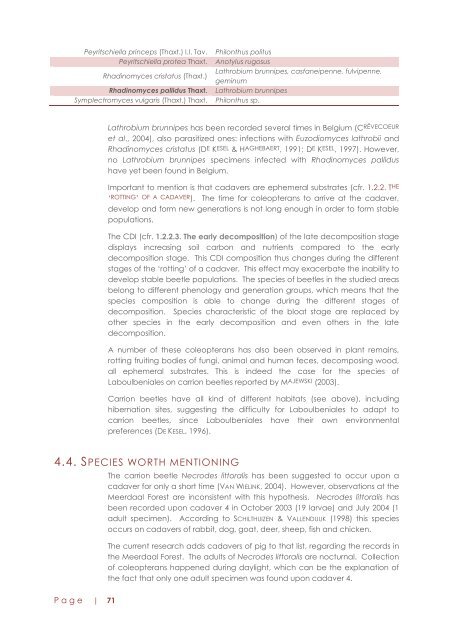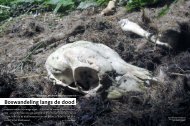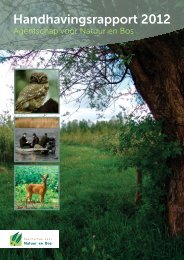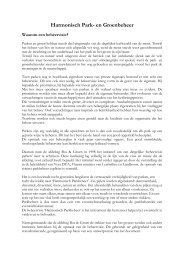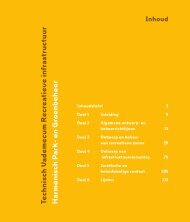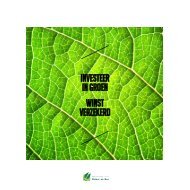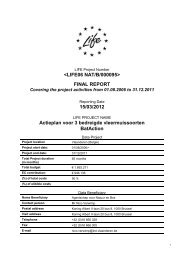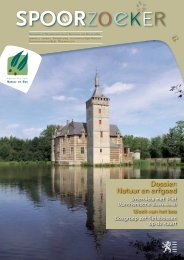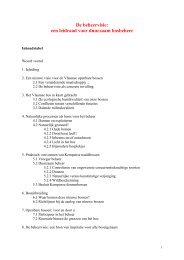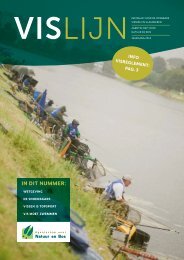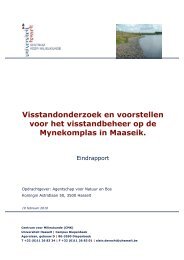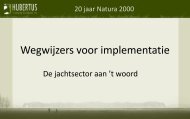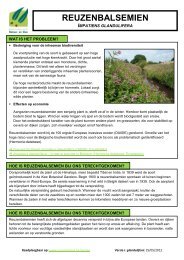LABOULBENIALES - Agentschap voor Natuur en Bos
LABOULBENIALES - Agentschap voor Natuur en Bos
LABOULBENIALES - Agentschap voor Natuur en Bos
You also want an ePaper? Increase the reach of your titles
YUMPU automatically turns print PDFs into web optimized ePapers that Google loves.
Peyritschiella princeps (Thaxt.) I.I. Tav.Peyritschiella protea Thaxt.Rhadinomyces cristatus (Thaxt.)Rhadinomyces pallidus Thaxt.Symplectromyces vulgaris (Thaxt.) Thaxt.Philonthus politusAnotylus rugosusLathrobium brunnipes, castaneip<strong>en</strong>ne, fulvip<strong>en</strong>ne,geminumLathrobium brunnipesPhilonthus sp.Lathrobium brunnipes has be<strong>en</strong> recorded several times in Belgium (C RÊVECOEURet al., 2004), also parasitized ones: infections with Euzodiomyces lathrobii andRhadinomyces cristatus (D E K ESEL & H AGHEBAERT , 1991; D E K ESEL , 1997). However,no Lathrobium brunnipes specim<strong>en</strong>s infected with Rhadinomyces pallidushave yet be<strong>en</strong> found in Belgium.Important to m<strong>en</strong>tion is that cadavers are ephemeral substrates (cfr. 1.2.2. T HE„ ROTTING ‟ OF A CADAVER ). The time for coleopterans to arrive at the cadaver,develop and form new g<strong>en</strong>erations is not long <strong>en</strong>ough in order to form stablepopulations.The CDI (cfr. 1.2.2.3. The early decomposition) of the late decomposition stagedisplays increasing soil carbon and nutri<strong>en</strong>ts compared to the earlydecomposition stage. This CDI composition thus changes during the differ<strong>en</strong>tstages of the „rotting‟ of a cadaver. This effect may exacerbate the inability todevelop stable beetle populations. The species of beetles in the studied areasbelong to differ<strong>en</strong>t ph<strong>en</strong>ology and g<strong>en</strong>eration groups, which means that thespecies composition is able to change during the differ<strong>en</strong>t stages ofdecomposition. Species characteristic of the bloat stage are replaced byother species in the early decomposition and ev<strong>en</strong> others in the latedecomposition.A number of these coleopterans has also be<strong>en</strong> observed in plant remains,rotting fruiting bodies of fungi, animal and human feces, decomposing wood,all ephemeral substrates. This is indeed the case for the species ofLaboulb<strong>en</strong>iales on carrion beetles reported by M AJEWSKI (2003).Carrion beetles have all kind of differ<strong>en</strong>t habitats (see above), includinghibernation sites, suggesting the difficulty for Laboulb<strong>en</strong>iales to adapt tocarrion beetles, since Laboulb<strong>en</strong>iales have their own <strong>en</strong>vironm<strong>en</strong>talprefer<strong>en</strong>ces (DE KESEL, 1996).4.4. SPECIES WORTH MENTIONINGThe carrion beetle Necrodes littoralis has be<strong>en</strong> suggested to occur upon acadaver for only a short time (VAN WIELINK, 2004). However, observations at theMeerdaal Forest are inconsist<strong>en</strong>t with this hypothesis. Necrodes littoralis hasbe<strong>en</strong> recorded upon cadaver 4 in October 2003 (19 larvae) and July 2004 (1adult specim<strong>en</strong>). According to SCHILTHUIZEN & VALLENDUUK (1998) this speciesoccurs on cadavers of rabbit, dog, goat, deer, sheep, fish and chick<strong>en</strong>.The curr<strong>en</strong>t research adds cadavers of pig to that list, regarding the records inthe Meerdaal Forest. The adults of Necrodes littoralis are nocturnal. Collectionof coleopterans happ<strong>en</strong>ed during daylight, which can be the explanation ofthe fact that only one adult specim<strong>en</strong> was found upon cadaver 4.P a g e | 71


